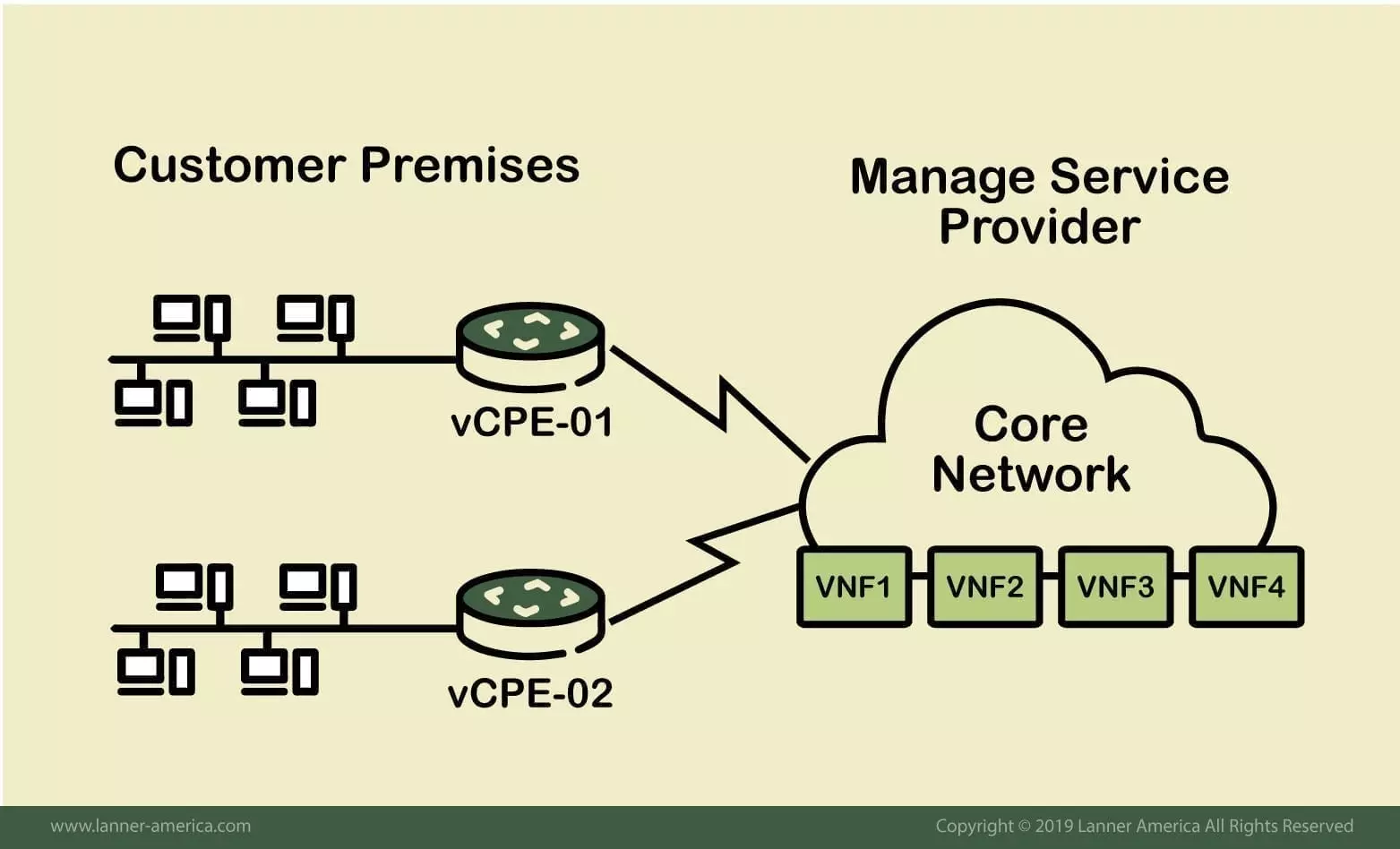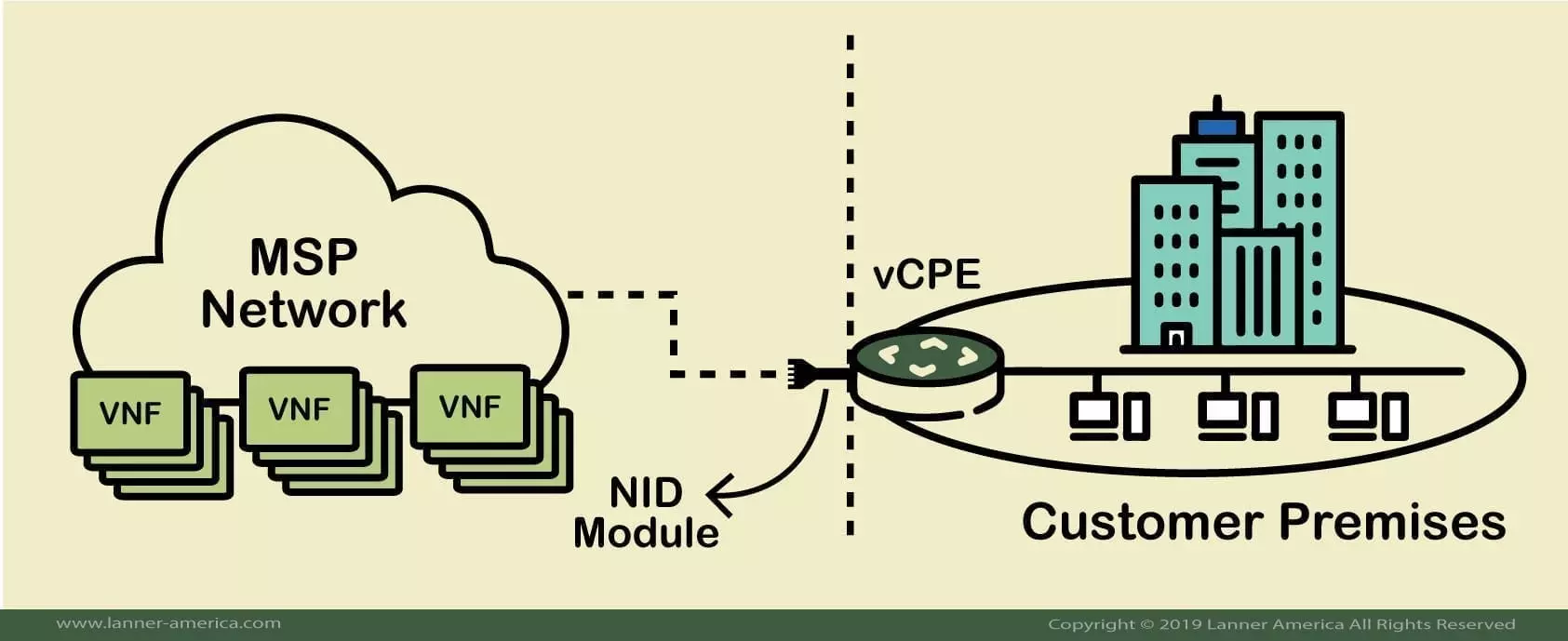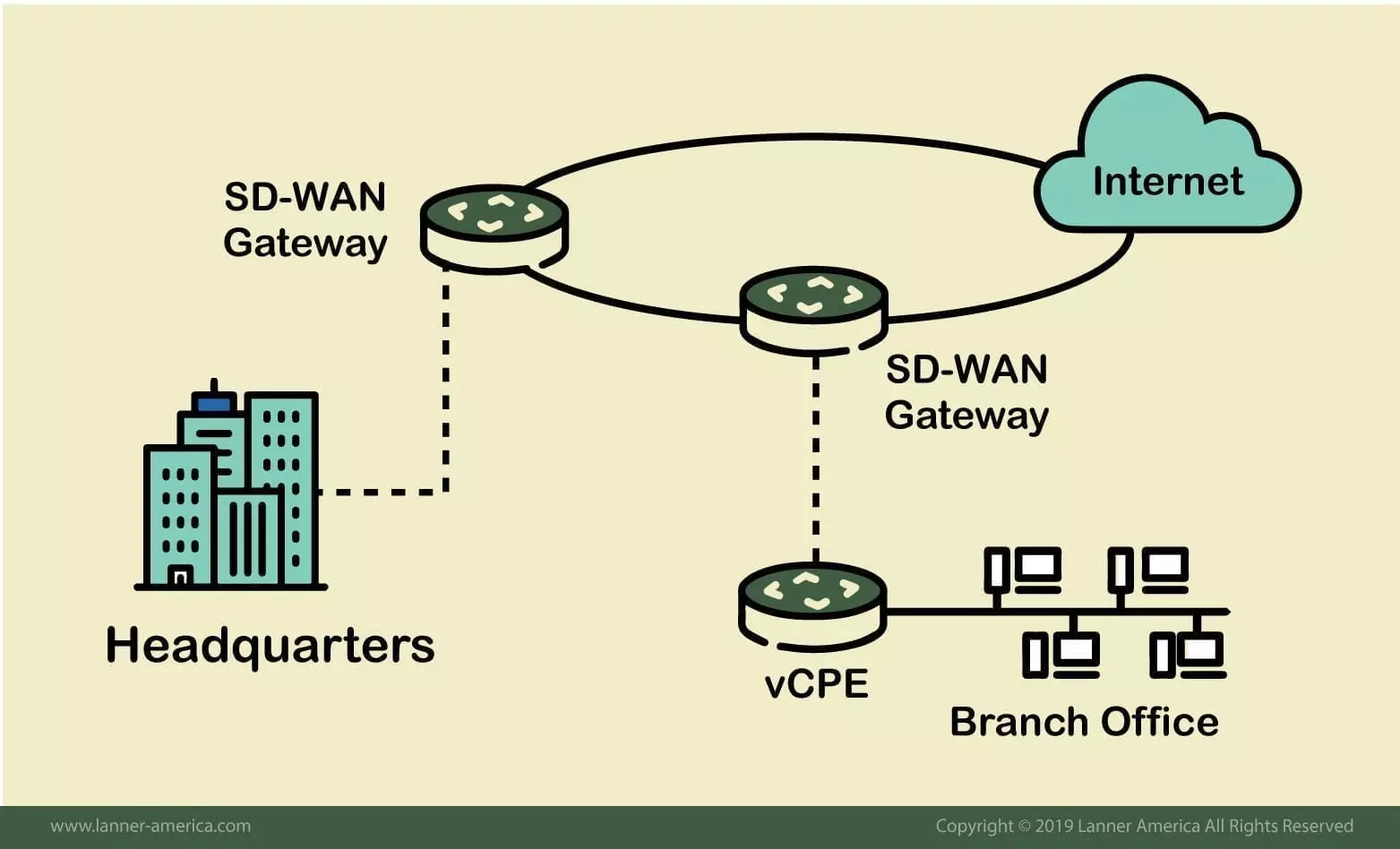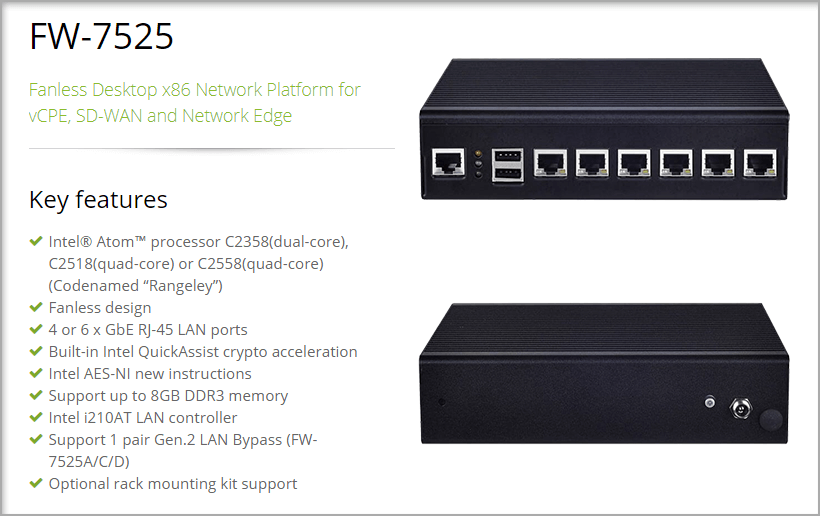
vCPE is a way to deliver virtual managed services such as routing, security, SD-WAN through software, rather than hardware, to the branch or edge networks. With a vCPE, all hardware-based operations are now achieved through a software-based virtual function.
In the following article, we’ll take a closer look into the virtualization of the traditional CPE.
What Is vCPE?
A virtual Customer Premises Equipment (vCPE) also referred to as cloud-CPE, uses software-based functions to carry out operations that were usually executed on hardware.
A CPE is any kind of equipment running on the customer’s premises and performing a specific service or task. A CPE could be a firewall, border gateway, router, NAT, VPN, etc. All traditional CPEs that were installed on customer’s premises required a specific and dedicated piece of hardware to run.
Now, vCPE changes this approach by detaching the intelligence of traditional hardware and letting a remote service provider or management platform host all software-based functions. The vCPE runs on commodity hardware and Virtualized Network Functions (VNF) rather than proprietary ASICs executing a particular network function.

Traditional vs Virtualized CPEs
Traditionally, in order to offer services such as VPN or WAN connectivity, service providers needed to install a piece of hardware at the customer’s place, built for the purpose and dedicated specifically for the customer.
The service provider’s technicians had to literally visit the customer to provision and configure the CPE, and also every time they needed a new service, this approach was and still is very costly. On top of that, traditional CPEs used to take large space on the customer’s rack space, consumed large amounts of energy, and would require continuous expert maintenance.
Below is a chart displaying the main differences between CPE and vCPE.
| Functionality | Functions Platform | Type of Hardware | Service Management | |
| CPE | Hardware-Based | Physical Network Functions | Proprietary ASICs
|
Distributed |
| vCPE | Software-Based | Virtual Network Functions | Generic Hardware | Centralized |
Today, MSPs (Managed Service Providers) are looking for ways to gain a competitive advantage. With the help of a vCPE, they can offer services other than just Internet connectivity. They can now provide extended services such as managed IP-VPNs, SD-WANs (Software Defined-WANs), SIPs (Session Initiation Protocol) and a lot more.
Since the intelligence resides on the provider’s remote data center, and the software runs on top of the on-site hardware, the customer only needs to deploy a general purpose box with enough resources and capabilities.
Advantages of using a vCPE
It is pretty obvious that detaching the underlying hardware from the software brings countless benefits. But what exactly are those advantages of using vCPE?
- Easier and Faster Deployment. The service providers can roll out new services much easier and reduce the Time-To-Service (TTS) dramatically. They can also deploy, upgrade, and remove any new algorithms and protocols remotely from the NOC, without having to physically visit the customer’s premises.
- Scalability and Elasticity. Service providers can take advantage of shared computational power, storage, and memory. If a virtual router is underutilized or overutilized, the resources can be evenly distributed with other nearby customers to match the demand. This approach gives space for better scalability and it also lowers costs.
- Reduce CPE’s CapEx and OpEx. Because vCPEs are not physically deployed on premises, they help reduce the service provider’s capital and operational expenses. No need for specific-purpose hardware, delivery, install and specialized technicians.
- Centralized User Interface. A vCPE virtualizes management, so instead of having many devices to log into, all management and monitoring can be done via a consistent and unified interface.
- Sophisticated and flexible services. A lot of new VNF providers are beginning to innovate traditional networking algorithms. vCPEs are a great opportunity to create new algorithms and services that were impossible with traditional hardware-based CPEs.
How Does a vCPE Work?
VNFs are the foundation of vCPEs. All traditional networking services such as routing, switching, session management, intrusion, and Malware detection are beginning to be converted into software functions (VNFs).
These networking functions can be managed through the MSP’s network and pushed directly into the customer’s standardized x86 hardware, which is hosting the vCPE. The Network Interface Devices (NID) are the vCPE modules powered by MSP’s NFV. The NID modules are the interface between the customer premises and the MSP network.

Although many VNFs are still VM (Virtual Machine) versions of legacy appliances, there are many popular networking vendors, such as Ericsson, Huawei, Alcatel, and Nokia, that are starting to develop cloud-based VNF solutions that are ready for the vCPE.
If the MSP wants to push this vCPE software, they can do so, using a container or microservices architecture. Traditional services like routing and switching are usually included in the software of the vCPE, but the MSP can extend its functionality by offering modules from VNF vendors and manage them through a VNF cloud platform.
When to use vCPE? A Use Case
Although WAN technologies such as MPLS have been reliable for years, enterprises are starting to look in other places for cheaper and more flexible solutions. The enterprise applications and user’s data consumption only seems to increase, and MPLS has a limit.
The scalability of MPLS has a significant price to pay, its installation and maintenance are costly, and on top of it, it has constraints on bandwidth.
SD-WAN is one of the best applications for vCPE.
SD-WAN (Software Defined – WAN) improves the operation of WAN technologies by detaching the underlying networking hardware from its control plane. As with vCPE, the idea of SD-WAN is virtualization. It replaces traditional WAN branch routers with virtualization appliances.

According to a 2018 report from marketing research firm Gartner, predicted that “by 2023, more than 90 percent of WAN edge infrastructure refresh initiatives will be based on virtualized customer premises equipment (vCPE) platforms or SD-WAN software/appliances.”
Network Appliances for vCPE
Although the most important element of a virtualized environment is its intelligence, it still needs a powerful piece of hardware to enable and run the software on the customer premises. At the basic level, vCPE platforms should come with generic Intel® x86 multi-core CPU so that they can run multiple VNFs.
What are some considerations when choosing a vCPE platform?
- Pre-validation with major VNF and SD-WAN providers.
- Compatibility with the support of open architecture.
- Rackmount and desktop appliances.
- Port availability. LAN ports such as RJ45, optical (SFP), and wireless connectivity (WiFi, Bluetooth, LTE)
- Powerful memory, processor, and storage.
For example, Lanner’s FW-7525 vCPE gateway controller enables software-defined, virtualized CPE applications for branch office network to optimize efficiency.

What’s Next?
The explosion in virtualization with software-based systems is making way to a big technological evolution, especially in the adoption of general purpose edge computing equipment. Today, rather than having the hardware determine the range of capabilities of each device, the MSPs can push the necessary software through an NFV platform to a general purpose device and call this, the vCPE.
It is believed that the vCPE is the future in NFV (Network Functions Virtualization) because it can improve and speed up service delivery.
vCPEs are the best use case for NFVs, and SD-WANs are the best use case for vCPE. So, we will likely start to see more generic hardware built for CPEs, running VNFs, and MSPs pushing networking functions such as SD-WANs to branch offices.







